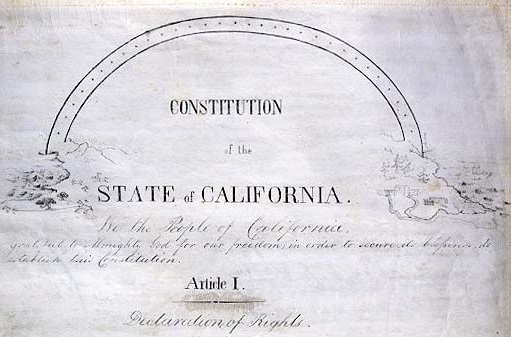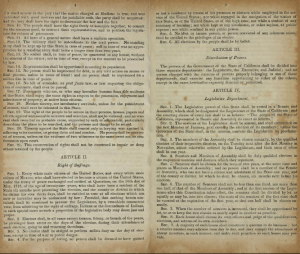
California Constitution. (Photo: www.sos.ca.gov)
California Governor’s Line-Item Veto Authority
He must explain the reason for the veto and follow the same process used for other vetoed bills
By Chris Micheli, October 9, 2019 6:52 am
Article IV of the California Constitution concerns the legislative branch of government. However, it also describes powers of the Governor and the role that he or she plays in the legislative process. Specifically, Section 10 of Article IV deals with legislation and the authority of the state’s chief executive.
Of particular interest is Subdivision (e) which grants the Governor line-item veto authority for the budget and appropriations bills. While the Governor of California has this authority, the President of the United States does not have such authority. The following is the language of this constitutional subdivision:

(e) The Governor may reduce or eliminate one or more items of
appropriation while approving other portions of a bill. The Governor
shall append to the bill a statement of the items reduced or
eliminated with the reasons for the action. The Governor shall
transmit to the house originating the bill a copy of the statement
and reasons. Items reduced or eliminated shall be separately
reconsidered and may be passed over the Governor’s veto in
the same manner as bills.
As a result of this constitutional grant of authority, the Governor has the authority to (1) reduce a line-item or (2) eliminate the item of spending entirely. In the budget bill, which is the only measure that has multiple appropriations, the Governor can reduce or eliminate line-items of the state budget and still approve the budget bill in chief.
Just as with other bills that the Governor may veto, he or she must explain the reason for his or her veto and follow the same process used for other vetoed bills. Subdivision (a) of Section 10 provides for the veto of bills, explaining that the Governor must return the bill to is house of origin with any objections to the bill. If 2/3 majorities of both houses vote to override the veto, then the bill becomes a statute.
So, too, any budget or appropriations bills in which items of spending were reduced or eliminated may be subject to a veto override and the items reduced or eliminated must be separately considered for purposes of a veto override. If the veto override is successful, then the reduced or eliminated appropriation is restored as approved by the Legislature.
- Legislative Intent Does Not Equate to a Mandate - April 27, 2024
- Frequently Asked Questions about State Agency Ethics Training - April 26, 2024
- Frequently Asked Questions about When Elected Officials Take Office - April 25, 2024




